Author Archives: Web Master
1st Chinmaya Naada Bindu Festival in USA
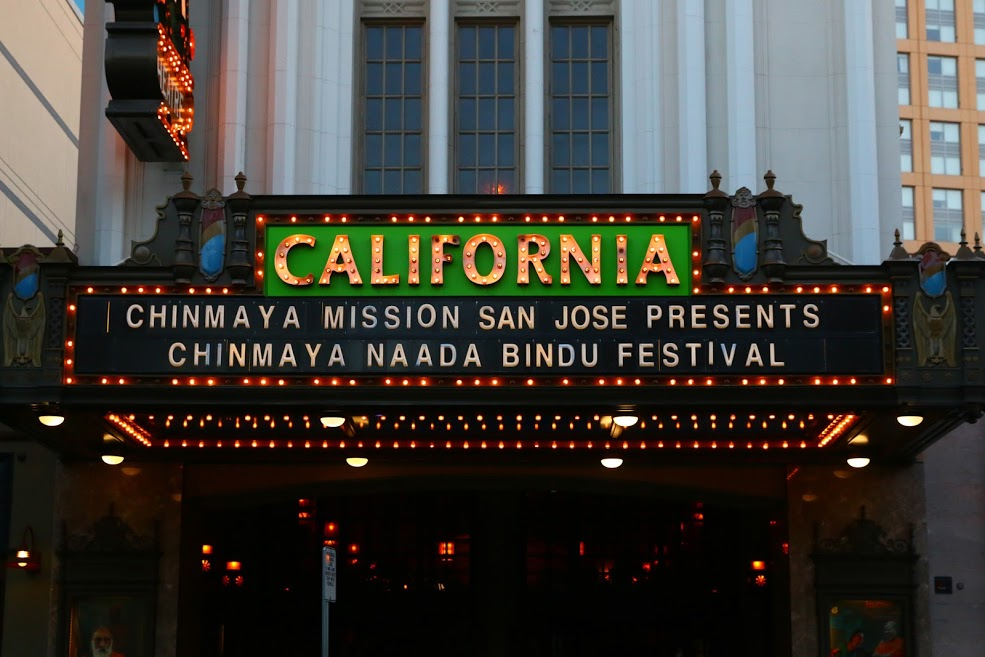
Chinmaya Naada Bindu (CNB), Chinmaya Mission’s residential school, or gurukula, for Indian classical performing arts, is situated in the Chinmaya Vibhooti ashram in Kolwan (near Pune), India, and annually hosts an acclaimed performing arts festival that is replete with spiritual discourses; classical music and dance performances by eminent artists; and lecture demonstrations by those artists, who provide a treasured educational forum for novices to meet and learn from renowned professionals.
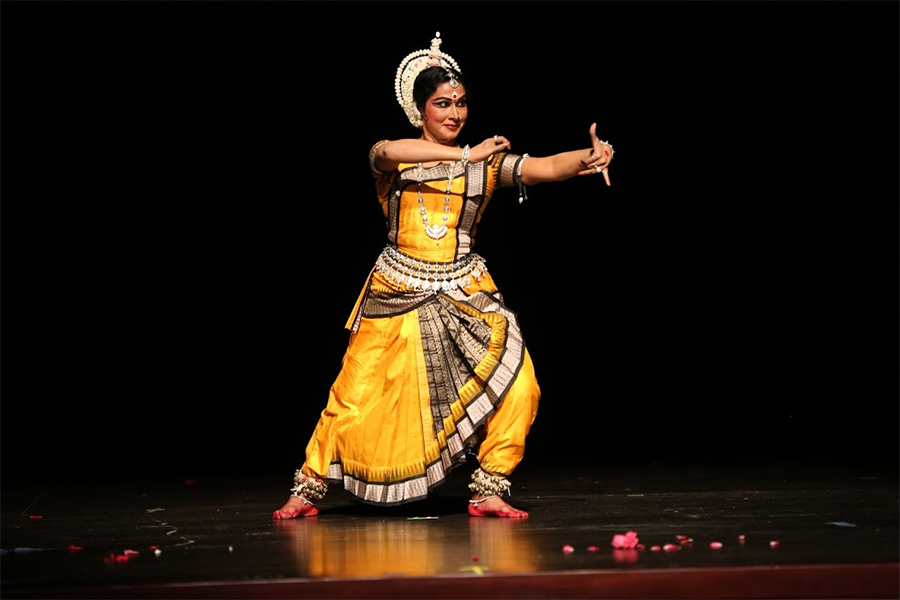
With the grace and blessings of Pujya Gurudev Swami Chinmayananda-ji, under the inspiring vision of Pujya Guruji Swami Tejomayananda-ji, Chinmaya Mission San Jose (California, USA) was pleased and honored to host the first-ever Chinmaya Naada Bindu Performing Arts Festival outside of India, July 5-8, 2016. Held in the august presence of Pujya Guruji at the prestigious California Theater, the festival was a four-day feast featuring legendary artists in dance and vocal music: O.S. Arun, Carnatic vocal; Sujata Mahopatra and students, Odissi dance; and Kaushiki Chakraborty, Hindustani vocal. Aimed at promoting the arts of classical music and dance as a means for inner purification and spiritual Self-realization, the festival brought together patrons and lovers of Indian classical performing arts for an unforgettable event in the milestone birth centenary year of Pujya Gurudev.
Each evening began with a masterful and eye-opening one-hour spiritual discourse on “Enlightening Faith” (Bhagavad Gītā, Chapter 17) by Pujya Guruji, followed by a short break and an hour and fifteen-minute performance of the artist of the day.
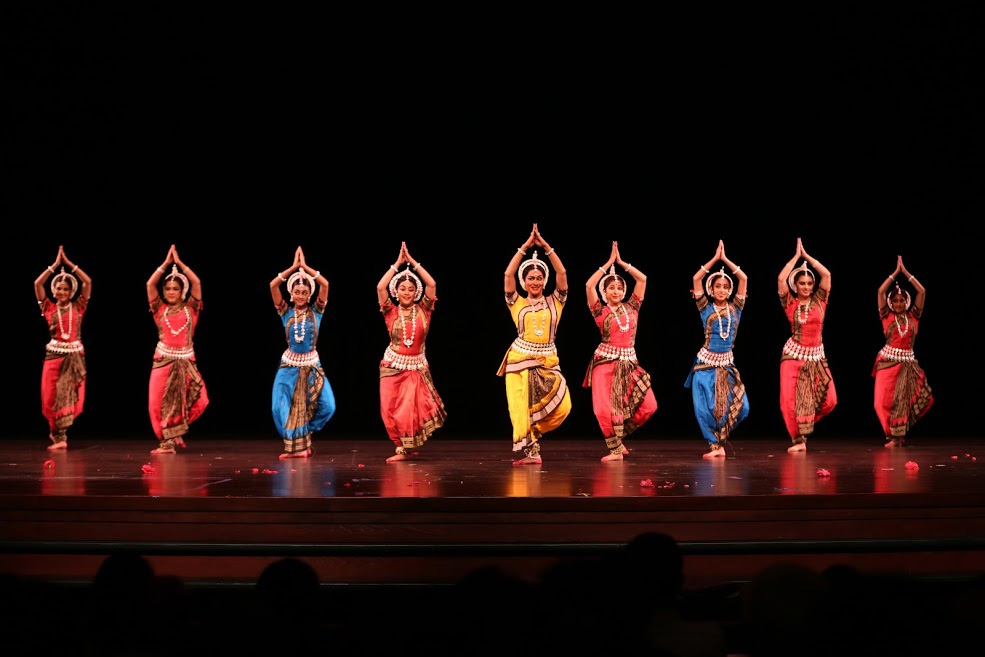
Pujya Guruji himself commenced the music festival on the first evening with a beautiful and memorable bhajan sandhyā themed on “The Journey of a Spiritual Seeker,” that touched and elevated the hearts of all. He was accompanied by the accomplished Kala Ramnath on violin, Ravi Gutala on tabla, and Abhijit Jere on manjīrā.
When O.S. Arun took the stage, he not only offered an enthralling Carnatic classical and devotional vocal concert, but also sang an original bhajan composition by Pujya Guruji, entitled, “Shyāma-sundara ko to ānā hi hogā,” as a surprise performance. He also sang the famous Suradasa bhajan on Lord Krishna’s rāsa-līlā that went into his classic “Nārāyana” nāma-saṅkirtanam, wherein he moved the entire audience of 800 to chant the Lord’s name to create a stunning and electrifying atmosphere.
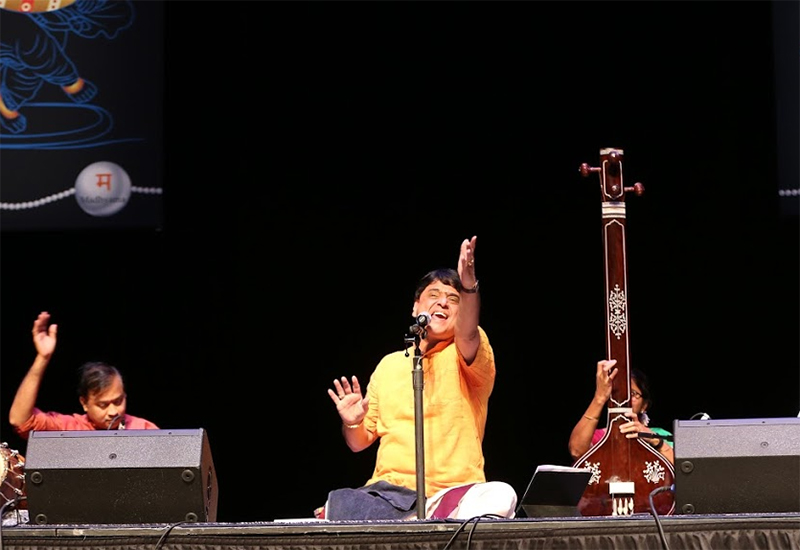
When Sujata Mahopatra showcased Odissi classical dance, along with her students, she mesmerized the audience with her epitome of grace and technical perfection in the art. As the disciple and daughter-in-law of the late Kelucharan Mohapatra, the legendary exponent of Odissi and Padma Vibhushan awardee, Sujata Mohapatra is a distinguished danseuse who has made her mark with the present generation of dancers, winning accolades from audiences and critics, alike. Her presentation at the CNB Festival of the Rāmāyana transported the audience to a sublime state of joy and appreciation.
It was of lauded significance that the CNB Festival befittingly concluded with a grand finale concert by the versatile Kaushiki Chakraborty performing Hindustani vocal. Her singing was replete with fine virtuosity, intellectual rigor, and aesthetic balance. Her recital included a devout performance of an original composition by Pujya Guruji entitled, “Ādideva Mahādeva,” and her powerfully charged improvisations spanned three and a half octaves in the Yaman raga. She also sang a famous abhanga at the request of the audience.
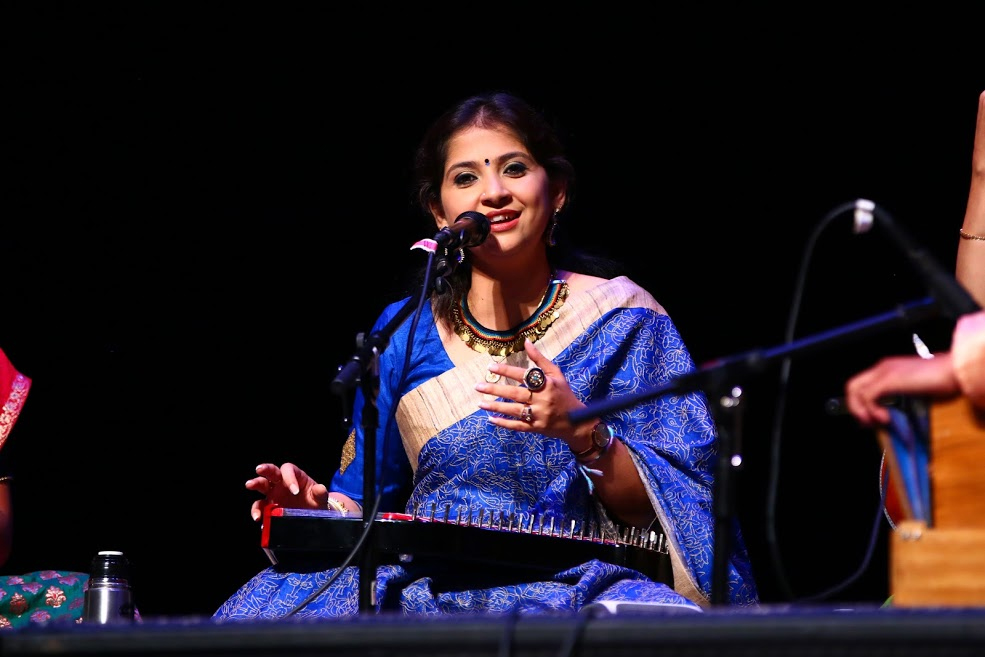
Each evening discourse opened with bhajans by CM San Jose’s talented Chinmaya Swaranjali group. P.C. Ramakrishna brilliantly emceed throughout the event.
The stage was transformed into an eclectic blend of traditional and modern décor. Pujya Gurudev graced the altar, while six panels featured with the CNB motif, and four panels featured Indian instruments and svaras.
The lobby of the California Theater was transformed into a Chinmaya Jivan Darshan exhibit of photographs and collectibles that highlighted Pujya Gurudev’s life and work, allowing devotees to witness and revel in the towering grandeur and magnificence of one of the greatest spiritual luminaries of the twentieth century.
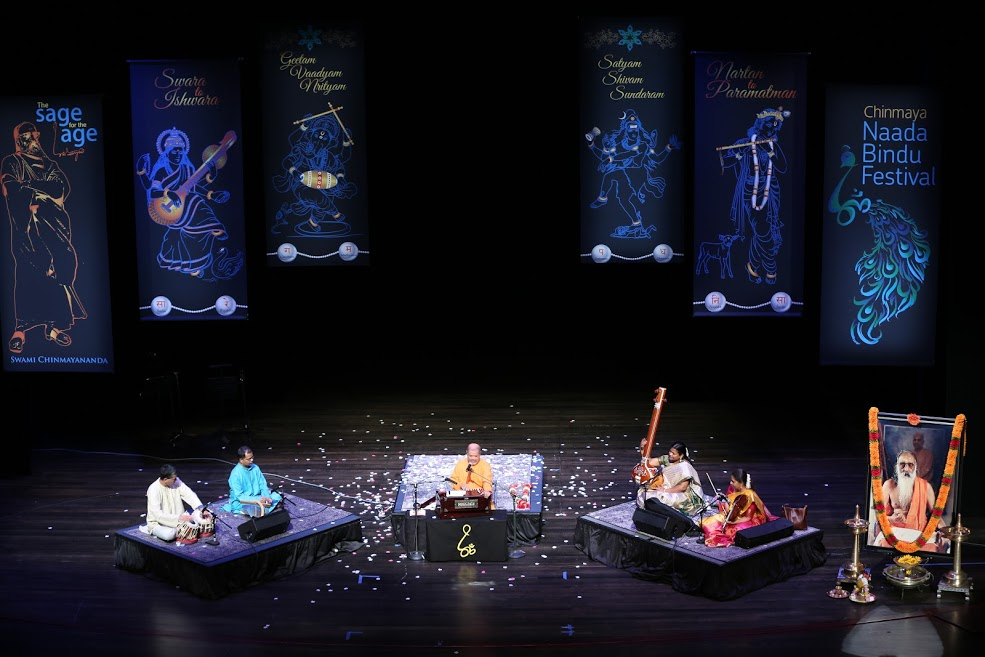
The close of each evening was celebrated with a delicious meal for all attendees, courtesy of CM San Jose’s patron families, who generously sponsored the festival and were given the unique opportunity to interact with each of the artists in an intimate dinner setting at the end of each day.
Throughout the entire event, the hearts all devotees in the audience were moved to melt. While Pujya Guruji’s discourses reverberated deep and divine wisdom for the soul, the artists’ performances resounded skilled and subtle svaras for the soul. The attendees greatly appreciated the event, stating that the successful CBCC event laid an inspirational foundation for future CNB Festivals in North America.
JANAMASHTAMI
Swami Chinmayananda
Extracted from Tapovan Prasad 1-9-1966
This is a sacred day dedicated to Lord Krishna. For centuries together, the story of Krishna has been repeated on this day in our country. Krishna was born on this day in our country. Krishna was born on this day in Mathura and we are inspired by the story year after year. Later, Krishna married several wives and perhaps divorced some! Thus we have brought him down to our own level and think that we are not as bad as Krishna. This was the idea for a very long time. Perhaps this is the superficial meaning of the story and it has become a slogan for the cheap missionaries to be blasphemous on Hinduism.
The significance of this story is very great. Hinduism accepts no history to be worth remembering. History, which Hinduism accepts, is only “His-story”. This “His-story” is clouded in mystery, for it is but “My-story”. Actually there is no mystery, in “His-story”. Everything is so scientific and logical. The seeming mystery has been explained to be always “My-story”; because He is Me, and I am He. “The Son and the Father are one”, says the Bible. Thus from “His-story”, it happens to be, on enquiry, a revelation of “My story”. It gives a straight answer to the question: Who am I?
Krishna is Truth. He was born in the quiet heart-caves of the Rishis. Those Rishis gradually transmitted their knowledge to their disciples. Thus Krishna was removed from the prison to Yashoda’s house — the disciples’ heart. There is no pain in this unique delivery. The Guru gives the child without the agony of labour pains. While we are sleeping in fatigue and exhaustion, wearied in production and destruction, we know not, that there is born a baby, called knowledge — Krishna — in our bosom. Engaged perpetually in procuring, keeping and spending, we are fatigued, and then in the deep sleep of midnight, the child is born. The senses are the gatekeepers who slept-off when Krishna was born in the prison.
As long as we are engaged in these outer activities, the scriptures do not open their secrets to us. When we are fed up with these and go to sleep to forget them, in meditation, this child is born. When we have fully enjoyed life in all aspects and find no peace from it — in that quiet sleep, in that maturity of understanding, the Light dawns. The scriptures are taught to such a heart.
Today is a wonderful day. The Lord is coming, so people fast. Devaki is in pain; therefore, you do not eat food. Fasting is Upasana, i.e. to live near the Lord (Upa—asanam). Attunement to the Lord through meditation is fasting. While contemplating, it is an agony to eat. For intellectual work, eating food and indulgence in the world outside is detrimental — for Krishna’s birth is Enlightenment! Food means satisfaction for the senses. Starve the senses! Uplift them to the contemplation! The thick darkness has come. Be brave! Light will dawn. There must be no fear. The Sun has dawned in our bosom. Thus we turn inward in meditation. In that silence of the heart, in spite of thunders, we must remain sufficiently long. Then only, in that long-earned tranquillity will we experience the birth of Krishna, the Light!
Important Announcement about Chinmaya University
Chinmaya Vishwavidyapeeth (Chinmaya University) has received an in-principle approval on June 8, 2016 from Ministry of Human Resource Development, Government of India, for establishing the deemed university for Sanskrit and Indic Traditions. Due to a change in the regulations for establishment of deemed universities that occurred subsequently, we are now in the process of establishing 5 departments in our main campus at Chinmaya Eswar Gurukula, Veliyanad, Kochi.
These departments, encompassing a bridge between Ancient Indian knowledge traditions and their application in current day knowledge fields, will be established in the next few months and the University plans to commence its degree granting academic programmes from academic year 2017-18. In this year 2016-17, the University will begin a few Certificate Programmes in its twin campuses at Chinmaya Eswar Gurukula, Kochi and Chinmaya Naada Bindu Gurukula.
Report: ‘The Inner Quest’ – Unique Residential Youth Camp
Report: ‘The Inner Quest’ – Unique Residential Youth Camp at Chinmaya Maauli Ashram, Pune.
A unique residential youth camp was organized at Chinmaya Maauli Ashram, Pune for the age group 18 to 30 years. A Rare Camp Text was chosen as the main theme for the camp – ‘Drig Drishya Vivek’. Swami Advayanandaji was the main Acharya for the camp. Swami Siddheshananda, Brahmacharini Maitreyi Chaitanya and Brahmachari Ved Chaitanya assisted for the other camp sessions.
Chinmaya Mission Pune members encouraged the youngsters with their presence for the camp inauguration and best wishes. Starting from 13th up to 17th August 2016 camp was attended by 25 youngsters and 8 elders as resident participants and some guest day campers attended Swamiji’s sessions during daytime. Pune, Navi Mumbai, Nagpur and Goa participants represented in this camp.
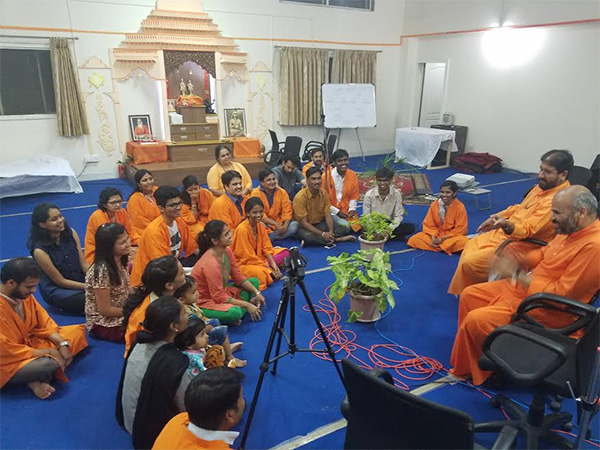
Even though half of the listeners were new to this subject and Chinmaya Mission, Swami Advayanandaji with his vast knowledge, made the topic very systematic, logical, interesting and simple. Swamiji inspired all to discuss and strengthen theirunderstanding from listening, by group discussions and question answer sessions. After listening to the lectures, special time was provided for self-study, followed by group discussion and question answers. To remove the fear of Sanskrit and simplify the shloka reading, special chanting sessions were conducted everyday before lunch. In post lunch workshop, each camper was encouraged to think on how this knowledge can be transferred further through various means. Special interactive workshop was conducted to know the structure and working of Chinmaya Yuva Kendra, and how it can transform the life of youngsters with clarity of understanding. Evening outdoor games, Aarati and seva in Ashram was practiced.
Morning meditation classes helped campers assimilate the knowledge gained. Session on goal setting and the importance and place of this knowledge in our life were conducted specially for the youngsters.
Every night after dinner there was a treat for the campers from young Indian classical performers. First day was delightful with professional instrument players of Sarod and Santoor. On day two Violin and Tabla artists performed for the campers followed by Harmonium recital from a camper from Goa, who matched the professionals. Next day Indian classical dance was performed by budding professionals joined by a few camp participants. On the penultimate day, campers performed skit in groups expressing what they learned from ‘Drig Drishya Vivek’.
On 15th August Independence Day morning, after flag hoisting and national anthem, an inspiring Sanskrit patriotic song was sung by the whole group. Swami Advayanandaji gave a very inspiring talk with an appeal to ‘Act for India’ in present condition, knowing the great glory of our nation in the past. In afternoon session, special tree plantation programme was executed by campers. A talk by Pujya Gurudev on ‘Love & Devotion’ was also screened to enable the new campers to have a glimpse of how Pujya Gurudev spoke and transformed so many millions of lives.
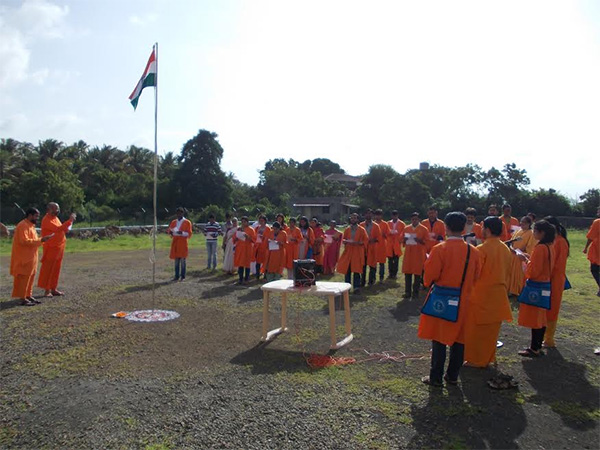
In valedictory session on the last day, campers expressed great appreciation, gratitude and thanked the Acharyas for conducting such a substantial and fruitful camp. Pujya Gurudev Swami Chinmayanandaji’s Ashtottara naam Archana was performed on the Padukas and Aarati was offered.
On 18th August, last day after the camp, special outbound empowerment programme was organized at ‘Z-Bac’ Adventure Institute with the help of Shri. Prasad Deole Chinmaya Mission Member. Participants learned how to face fears, working in team, facing challenges and observing nature.
All parted with great satisfaction, enjoyment and decision to work and volunteer for more such camps to be organized in future.
All the session and glimpses of the camp are available on the website of Chinmaya Mission Pune – www.chinmayamission.com/pune
Also all the video recording is made available online on youtube channel of Chinmaya Mission Pune – www.youtube.com/chinmayamissionpune
All the seekers worldwide can take benefit of these lectures made available online.
Prof B. Mahadevan receives the Vishishta Sanskrit Sevavrati Samman Award
Prof. B. Mahadevan, Vice Chancellor, Chinmaya Vishwavidyapeeth, received the Vishishta Sanskrit Sevavrati Samman Award for 2016 from the Honourable Minister for HRD Shri Prakash Javadekar, at the inauguration function of the ‘Sanskrit-Saptahotsavah’, on August 17, 2016 held in New Delhi.
In his acceptance speech on this occasion, Prof. Mahadevan cited how, for decades, Sanskrit has been considered a legacy, treasure and heritage, and how it was now imperative to give it its due, by institutions like Chinmaya University bridging the knowledge traditions with current day applications. He added that there was a need to encourage research in Sanskrit and to come up up with new creations in the language. This needed to be ensured. To nurture Sanskrit, we will need to give shape to new institutions.
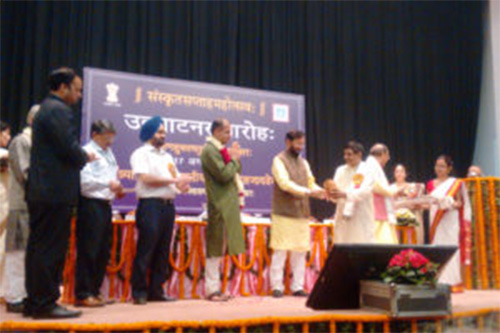
Higher Values Add Value to Life
Pooja is performed at two levels – external and internal. At the external level, we may not be able to offer a golden throne, jewels or expensive ornaments to the Lord. However, mentally, even though it costs nothing to offer the most exotic things, we offer a small coconut in our prayers!
Similarly, to make our outer life prosperous, we require a lot of effort. But to enrich the inner life, we are not dependent on external means.
Misplaced Value
Normally, we applaud a person for his achievements, but we respect him for what he is. We have divided the world into haves and have-nots and continue to admire and honour the ‘haves’. As long as we persist in this erroneous attitude, there will always be degradation in society.
‘To be’ is much more important than ‘to have’. There is a very poignant story of a rich brother and a poor sister. The affluent and arrogant man refused to invite his sister. Regardless of this lack of courtesy, the unfortunate sister decided to visit her brother. The brother insulted her and categorically told her to leave his house. Saddened by his behaviour, she prayed to God for help and, as a result, gained a great deal of wealth.
When the brother heard of his sister’s sudden change of fortune, he immediately invited her to his house for a banquet. The sister arrived, beautifully dressed and laden with precious ornaments. When the feast was served, she took off her ornaments and began to feed them the food! Aghast and outraged, the brother demanded to know what she was doing. Totally unfazed, she replied she was feeding those symbols of wealth, because of which she had been invited.
A man may be worth a million dollars, but if he is devoid of values, he is worthless. As long as outer affluence is given more importance than inner wealth, degradation of values will continue.
Stand Up for Values
Brahman or the Infinite Reality is indicated by the term sacchidananda. Sat, chit and ananda are three aspects of the Universal Consciousness; one and the same, they are the basis of all values. Clearly the learning is that we should not create divisions.
All beings want to live and live forever. Hence, respect for life is a primary value. Value lies in saving a life, not merely in refraining from killing. Delving into history we can draw lessons from the poignant story of Gautama Buddha and his cousin. The cousin shot the bird, but Buddha saved its life. Subsequently, both boys claimed the bird as theirs. If the bird were asked whom she belonged to, would she not opt for her saviour?
A famous shloka from the Mahabharata categorically states that though man is a slave to money, money is slave to none. Without exception, everyone says that honesty is the best policy. At government levels, vigilance agencies monitor the work of other departments. Despite this, corruption continues, because even the vigilance staff is open to bribery.
In the absence of honesty and trust, it is extremely difficult to eradicate corruption. As long as greater importance is given to power, pleasure or money, values will take a back seat.
In short we must take a stand for values in life, else we will fall for everything that comes our way!
An Altar Alters Life
In order to live a peaceful and fulfilling life, one must enrich one’s inner equipment – the mind and intellect. For this, it is important to follow values.
Inner Purification
However, many people question, “Why? Why should I follow values?” On the other hand, some individuals declare that there is no need for religion or God; just the observance of human values is enough.
Let us look at this carefully. We generally dedicate our activities to our loved ones. Authors dedicate their books to their parents, teachers and so on. The act of dedication adds a new meaning to the action. Similarly, a value can be sustained only if it is offered at a higher altar.
Take the example of a businessman who follows the values of punctuality, efficient service and honesty in order to make his business more prosperous. Once his credibility is established, he tends to relax and the business goes into a decline because there is no higher ideal to which the work has been dedicated.
Similarly, people will not be able to sustain a virtuous life unless the values and virtues they uphold are for inner purification, devotion for God or for God realization.
It is only in such cases that there will be no hindrance, obstruction or blockage on the path. Often people want to know how long they need to be patient or loyal. Or how many times they need to be forgiving? Can we really put a limit to such things?
Altar of Worship
In actual fact, human values have real meaning only when they are dedicated to God. Meera Bai and others were put through innumerable hardships, but they did not budge because their ideals or goals were not materialistic or worldly. They did not seek appreciation or reciprocation from anyone.
Thus, values can be sustained only when the goal is spiritual and they are dedicated to a higher altar. Such an altar will alter our life. We must be committed and dedicated to the altar of our worship. There should be no doubting of the values. It is ineffectual to follow a path that we do not have absolute faith in. There should be no wavering from the path of virtue. Only such a person can be called virtuous.
We call ourselves the roof and crown of creation, so we must follow the rules of this high calling. The superior must protect the inferior; the more powerful must protect the weak; the old must protect the young; and the rich must look after the welfare of the poor and make sure that they also become prosperous.
Such actions alone can be called values. They will add value to our lives. Otherwise we will grow and add years to our life and not life to our years. Our lives must be vibrant so that they are a blessing to ourselves and to others around us.
10th Batch of Youth Empowerment Program was inaugurated by Guruji
Gallery
The 10th Batch of Youth Empowerment Program was inaugurated by Pujya Guruji Swami Tejomayananda at Chinmaya Vibhooti.
Swami Tejomayananda conducted a special camp at Chinmaya Vibhooti
Gallery
Pujya Guruji Swami Tejomayananda conducted a special camp for all CCMT TCT and CAT staff & family from August 13 – 15, 2016.